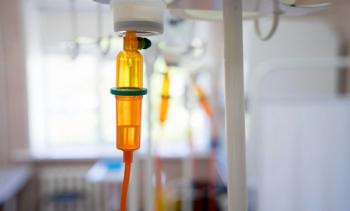
Use of Opioids and Barbiturates in Migraine Indicates Care Has Room for Improvement, Study Says
A study presented at the American Headache Society 2019 Annual Scientific Meeting found that care for patients with migraine has room for improvement, based on the results of a web-based survey of more than 20,000 people.
A study presented at the American Headache Society 2019 Annual Scientific Meeting found that care for patients with migraine has room for improvement, based on the results of a web-based survey of more than 20,000 people.
The survey demonstrated the use of nonpreferred migraine treatments, such as opioids and barbiturates, and going to emergency departments (EDs) for care, illustrating the opportunities for improvement, the researchers said.
Called OVERCOME (Observational Survey of the Epidemiology, Treatment and Care of Migraine), the survey sought to identify the patients with the greatest care needs. The survey included the migraine Treatment Optimization Questionnaire (mTOQ), which measures the adequacy of treatment for current acute therapy.
People with 4 or more migraine headache days (MHDs) per month were oversampled. Researchers examined the size of the population who may be eligible for novel medications designed for acute treatment of migraine by forming 3 groups:
- Group A, those not currently on an oral triptan but with a history of using and discontinuing at least 2 oral triptans
- Group B, those currently using an oral triptan with a mTOQ sum score of less than 6 (meaning poor/very poor treatment efficacy) and history of failing at least 1 prior oral triptan
- Group C, those with potential contraindications to triptans (such as cardiovascular conditions/procedures)
The sample included 21,143 people with migraine, and the study sought to identify what percentage of those with migraine met the criteria
For the total sample, the mean age was 42 years, and 74% were female; 72% were non-Hispanic white, 8% were non-Hispanic black, 10% were Hispanic, 3% were Asian, and 8% marked other. A total of 12,299 (58.2%) people with migraine reported 0 to 3 MHDs per month and 8844 (41.8%) reported 4 or more MHDs per month.
Taken together, 3268 (26.6%) patients in groups A, B, and C with 0 to 3 MHDs and 2898 (32.8%) with 4 or more MHDs appear eligible for newer medications, the researchers said.
The researchers said 24.3% of the eligible population with 0 to 3 MHDs were currently using an oral triptan, despite either having a contraindication or reporting poor/very poor treatment efficacy. Among those with 4 or more MHDs, 33.6% were using triptans. Patients also used opioids (0-3 MHDs, 23.9%; ≥4 MHDs, 31.2%) and barbiturates (0-3 MHDs, 13.4%; ≥4 MHDs, 16.0%).
Regarding healthcare utilization in the past 12 months, 55.6% and 72.9% of eligible people with 0 to 3 and 4 or more MHDs, respectively, sought care for migraine; 20.8% and 28.1% went to an ED. Regardless of MHDs per month, roughly 3 out of 10 may qualify for novel medications designed to be used acutely for a migraine attack, the researchers said, citing the consensus statement.
Reference
Lipton R, Pohl G, Araujo A, et al. Who is eligible for novel medications designed for the acute treatment of migraine and what are their unmet needs? results of the OVERCOME study. Presented at: 2019 American Headache Society Annual Meeting; July 11-14, 2019; Philadelphia, PA. Abstract 632440.
Newsletter
Stay ahead of policy, cost, and value—subscribe to AJMC for expert insights at the intersection of clinical care and health economics.









































